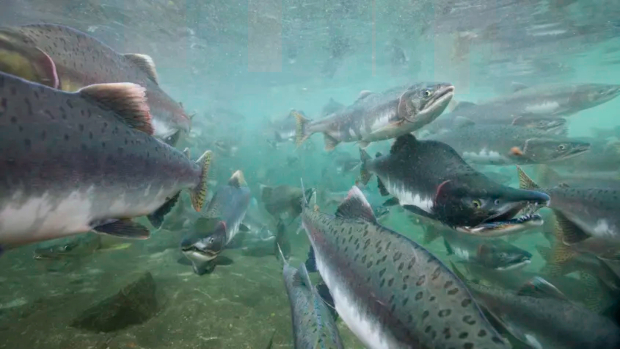
Huawei AI tech used to filter out invasive salmon species in Norway river trial
Huawei and its partner Berlevåg Jeger-og Fiskerforening (BJFF) have deployed an AI-powered filtering system in Norway’s Storelva river that allows Atlantic salmon to pass upstream while filtering out other invasive species.
Norway’s delicate coastal ecosystem has been damaged over the past few decades, largely due to the introduction of the Pacific salmon species into Russia’s White Sea in the 1950s, which have since made its way south into Norwegian waters.
The fish have a rapid reproduction cycle and are able to aggressively compete for food, which threatens to overwhelm the native Atlantic salmon in hundreds of rivers along the nation’s coastline.
Huawei and BJFF have successfully deployed and tested a filtering system that uses AI to prevent Pacific salmon from entering the upstream channel of Norway’s river system. A mechanical gate allows Atlantic salmon, as well as the Arctic red-spotted variety, to continue upstream to complete their migratory spawning process. The invasive species is diverted to a holding tank for subsequent removal.
Algorithms were designed in early 2021 based on Huawei’s machine vision technology to identify different fish species. In July 2021, the two companies then deployed a monitoring station equipped with an underwater camera in Storelva River. Providing a continuous video stream, the hardware is able to use the algorithm to identify Atlantic salmon with an accuracy of 91%, cutting the need for workers to manually check the fish by 90%.
Traditionally, volunteers were required to stand in the river to identify the Pacific salmon with the naked eye, mainly by the spots on their tails. This can make it challenging to quantify the threat, with many fish being missed and their sex impossible to determine.
“This is a unique innovation, both in Norway and globally. With this high-tech solution, we have complete control of the river. Local river managers and local and central administrations along the coast have also shown great interest in the project,” said BJFF president Geir Kristiansen.
The Chinese tech company said the demand for a solution was urgent. The number of Pacific salmon in Norway’s rivers has skyrocketed, with 13,900 caught in 2019, jumping to a record breaking 111,700 caught in 2021, representing 57% of all salmon caught in the country. Although almost all of these fish were caught in Troms and Finnmark, a county in the north of the country, Pacific salmon catches have been recorded in every county.
In contrast, numbers of the native wild salmon have declined by a quarter from peak levels. Huawei and BJFF said the invasive species is largely responsible, with escaped and less genetically diverse farmed salmon exacerbating the problem by weakening the Atlantic salmon’s genome after interbreeding.
The companies also claimed that the data collected can also reveal accurate patterns of migratory behaviour, monitor different types of fish populations, provide information for further research, and help develop measures to stop overfishing.
The next step of the project is to deploy the technology in Norway’s salmon farms to reduce the environmental harm caused by escaped farmed fish.
Ⓒ Future Publishing








Subscribers 0
Fans 0
Followers 0
Followers